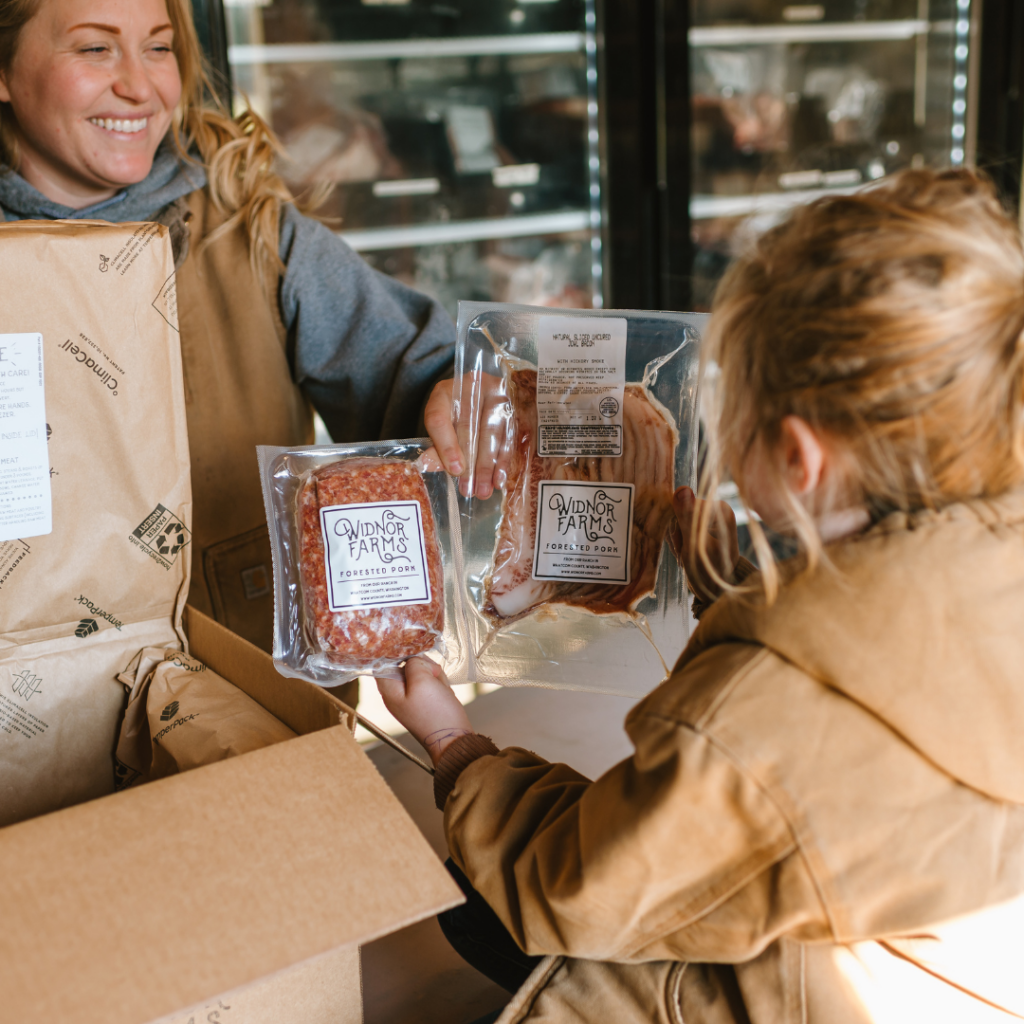
This post has been rattling around in my head for quite some time now. It’s no secret or surprise that when it comes to shopping for meat I am always in favor of supporting local ranchers at the source but I know that doing so does come at a premium compared to just stopping by your local supermarket. The cost comparison is something I plan to cover in a future blog post but for now I want to outline the main differences between direct to consumer meat sales and the larger commercial meat supply chain market that supplies grocery stores.
An Overview
When I refer to direct to consumer I’m referring to business models like we practice here at Widnor Farms where you can purchase meat straight from us with no middle men. Our livestock spend their entire lives here on our farm and we arrange the butchering, processing and packaging ourselves. We then sell the meat directly to you.
In comparison, the meat that ends up at grocery stores goes through quite a few different stages to get there. It’s easiest to explain with beef cattle specifically. Typically in this kind of arrangement a rancher will raise the cattle for the first six months. The cattle will then head to what’s called a background or stocker operation where they continue to eat and grow for another six or so months. After that they head to a feedlot where they spend the last four to six months being “finished” with grain, corn, or other byproducts before slaughter. After slaughter comes butchering and processing before the beef is packaged and shipped out to grocery stores around the country.
What It Means for Us
Being DTC (direct to consumer) is certainly not without its challenges. It’s a lot of different hats to juggle; because we are in charge of meat sales from start to finish it’s up to us to make sure that the livestock are raised properly through their entire time with us and that we maintain certain strict standards for USDA processing and butchery. We’re also in charge of marketing ourselves and our offerings properly and effectively through a well stocked and up-to-date website, handling all the shipping logistics and maintaining connections with our customers. There is so much more behind the scenes than most realize including: credit card processing platforms, websites, shipping fulfillment, licensing and insurance. But that’s also one of the biggest gifts. We absolutely love getting to know our customers and relish the opportunity to provide education and connection surrounding their food in a way that in my opinion just can’t be replicated with buying from the grocery store. It’s what makes all the bumps in the road more than worth it. Selling DTC also allows us to set a price for our products that actually pays for the work we do rather than accepting a commodity price. It allows us to actually make some sort of profit that we can put back into the business to create a susta.
What It Means for You
Getting to know your local farmer/rancher is something I’ve heard customers tell me time and time again is one of the biggest benefits of buying direct. We get to know your preferences and you get to understand where your food comes from in a whole new way. Though, transparently, we can’t regularly compete with grocery store cost savings, we know that the products we provide are the kind you can be proud to stock your freezer with and serve to your family.
I’d much prefer to buy from local ranchers/processors and local farms for meats and produce as we’re pumping money into the local economy. The products we purchase are usually superior than chain store markets except for occasional sales. I’m delighted to get your news letter, Bri as you’re family operation is one of my favorites.
Continued prayers for your family and God bless,
Mary Ann